What is the Slowest Month for Weddings? Uncovering the Off-Peak Season
When planning your big day, you might be curious about when the hustle and bustle of wedding season winds down. Understanding the ebb and flow of wedding dates can be incredibly helpful, whether you’re aiming for a more intimate setting, hoping to find better deals, or simply trying to avoid the busiest times. Typically, the wedding industry sees a surge in ceremonies during certain months due to favorable weather and holiday seasons, which creates what’s known as peak wedding season. Conversely, there are periods when the demand for weddings drops, making them what could be considered the off-peak or slowest months for weddings.

Identifying the slowest month for weddings involves looking at various factors, including weather patterns, holidays, and cultural preferences. While summer and early fall often claim the title for the most popular times to tie the knot, the cooler months of late fall and winter tend to see a decline in wedding festivities. January, for example, after the rush of holiday engagements and celebrations, is typically less favored by couples, making it one of the lesser-demanded months. This lull provides the opportunity for couples to take advantage of potentially lower costs and greater venue availability.
Key Takeaways
- Understanding peak and off-peak wedding seasons can benefit budgeting and planning.
- Late fall and winter months often see a decrease in wedding events.
- Factors such as weather, holidays, and cultural preferences influence the popularity of wedding months.
Understanding Wedding Seasons
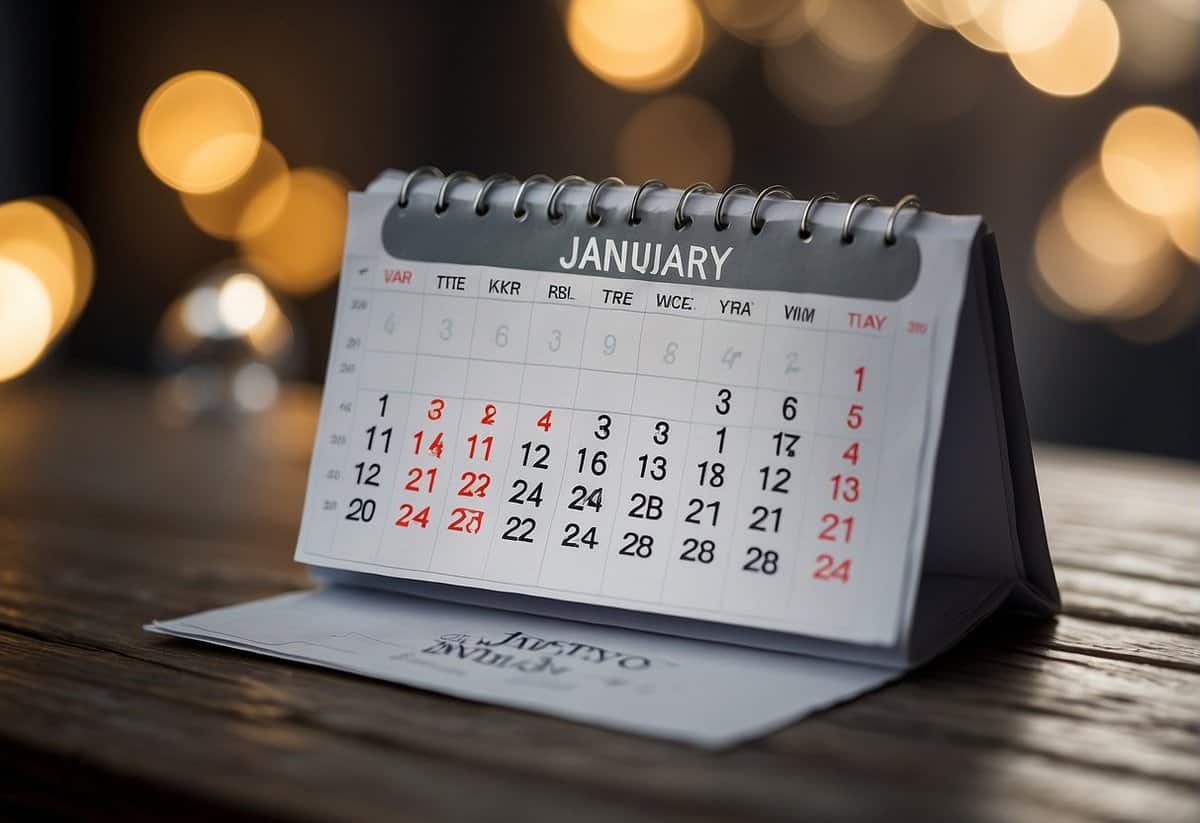
When planning your big day, you’ll find that certain months are more popular for weddings, which are known as peak months. Meanwhile, other times of the year offer unique advantages, known as off-season periods, which can include more availability and potential cost savings.
Identifying Peak Months
Peak wedding months generally coincide with mild weather and natural settings at their most beautiful state. For example:
Fall: September and October are considered the height of wedding season, with each month accounting for a significant portion of annual weddings. This is likely due to the pleasant weather and colorful foliage. According to The Knot, these months each saw 17% of all weddings in 2023.
Summer: The warmth of June, July, and August makes these months highly sought after for weddings, especially for outdoor ceremonies and receptions.
Spring: Your options include March, April, and May, when nature rejuvenates, offering a picturesque backdrop of blooming flowers.
Winter: While less popular due to the colder weather, December still sees a fair share of weddings, possibly due to the festive holiday season.
Recognizing Off-Season Advantages
The wedding off-season typically spans the colder parts of the year, particularly in winter and early spring. Some benefits of considering an off-season wedding are:
Cost Efficiency: Venues and vendors may offer lower prices, or be open to negotiation because of less demand. January and February are known for being less popular, making them potentially cheaper options for your wedding.
Availability: You’ll find greater availability for your preferred venue and vendors during the off-season, as there’s less competition for dates and services.
Understanding wedding seasons is essential to making an informed decision about when to schedule your special day. Whether you’re drawn to the peak months or considering the off-season, each period has its charm and practical considerations.
Factors Affecting Wedding Month Selection
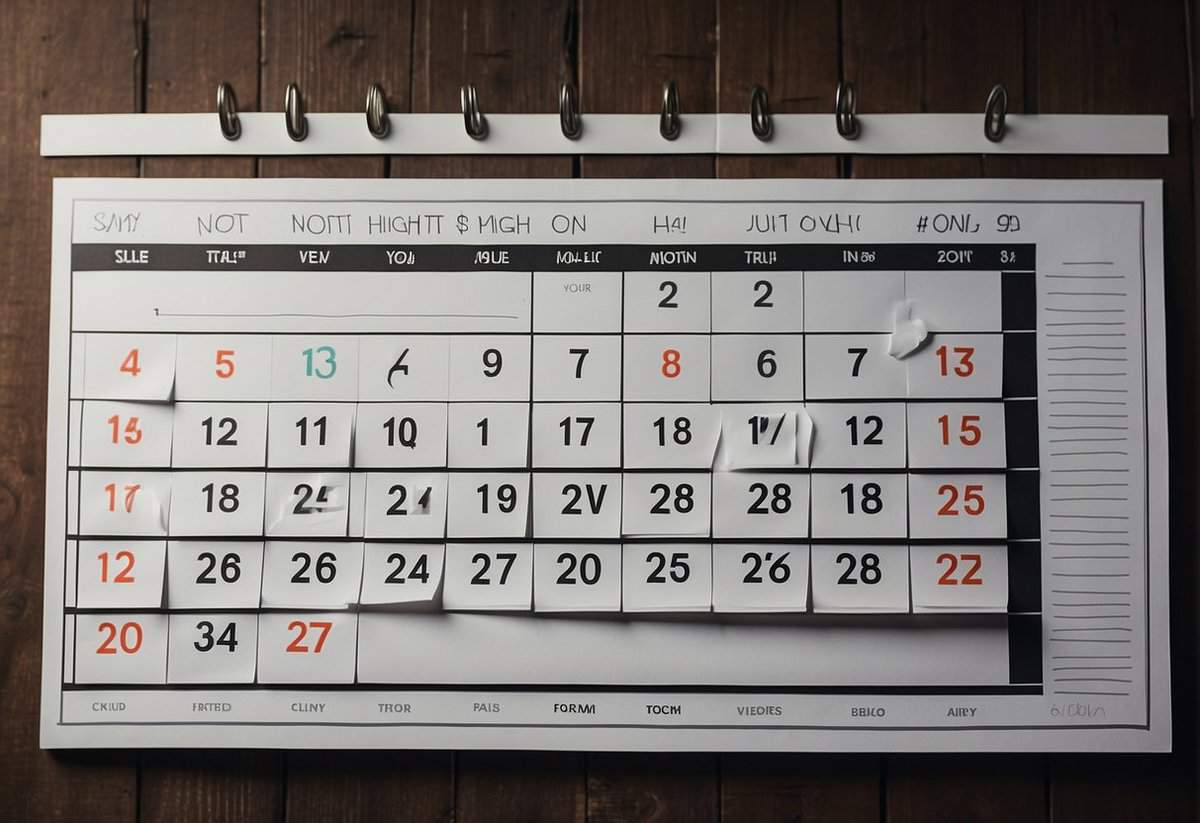
When you’re deciding on the perfect month for your wedding, you’ll want to consider various factors, all of which can greatly impact your experience and the logistic aspects of your big day.
Weather and Climate
Temperature and weather conditions during certain times of the year can heavily influence your choice of a wedding month. If you desire an outdoor wedding venue, the late spring and early fall months typically offer mild and comfortable weather. However, if you’re looking to avoid the summer heat or the icy risks of winter, you’ll need to plan accordingly.
Venue and Vendor Availability
The availability of venues and vendors often fluctitates throughout the year, impacted by peak season and off-season variations. Scheduling during peak season may reduce flexibility and options, as many venues and vendors book up fast, while the off-season might increase your chances of securing your desired locale or professionals, possibly at a lower cost due to less demand.
Holidays and Significant Dates
Planning around holidays and significant dates requires careful consideration. A wedding date near a major holiday might affect guest availability and travel plans. Moreover, it’s important to be aware that certain dates, despite being appealing for their significance, may come with premium pricing and decreased vendor and venue choices due to high demand.
Financial Considerations
The wedding budget is a key part of the wedding planning process. The month you select can directly impact the cost because of supply and demand. An off-season wedding could offer significant discounts and more room to negotiate with venues and vendors, potentially making your dream wedding more affordable.
Popular Wedding Months and Trends
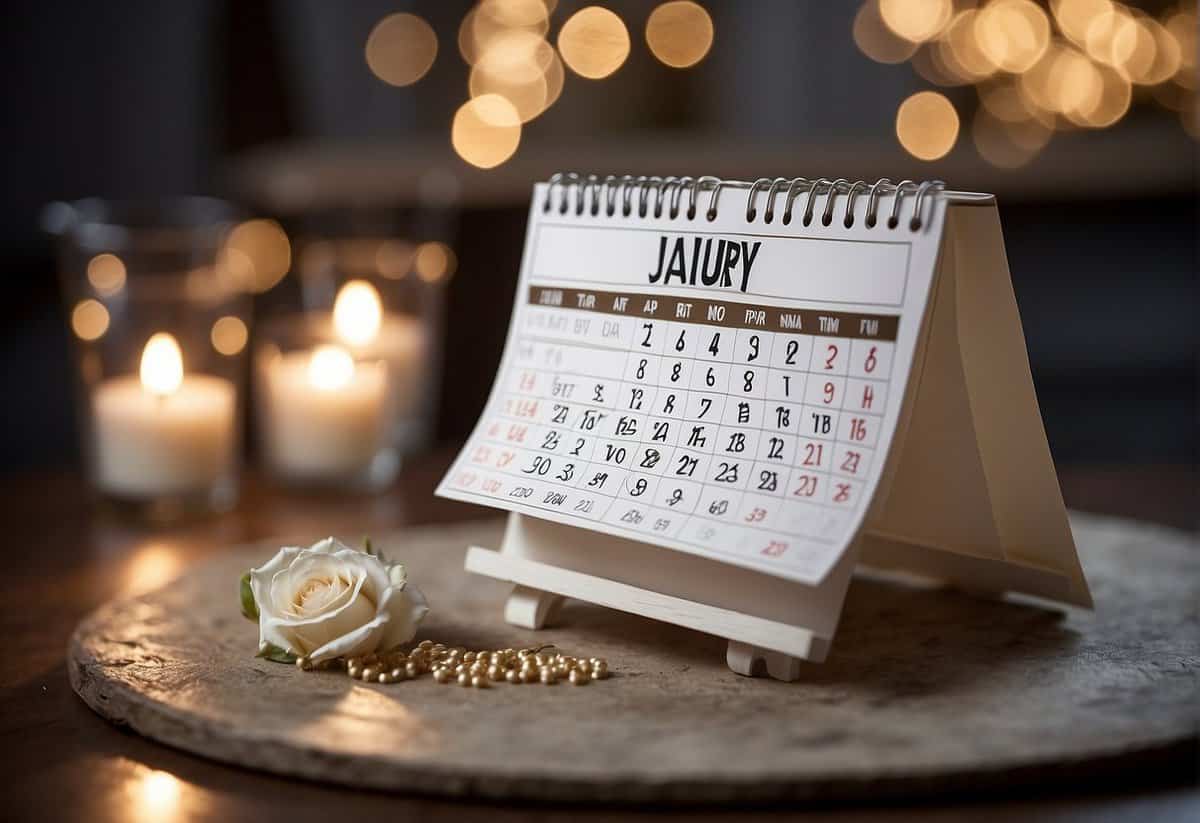
When planning your big day, considering peak wedding months can impact everything from venue availability to accommodation costs for your guests. The warm glow of fall foliage and the sunny vibes of summer are some of the enticing seasonal backdrops that can define your wedding.
Summer Lovin’ Weddings
June to August offers long, sunny days perfect for outdoor weddings. Beach weddings are especially popular during these months. You’ll find July weddings capitalize on warm weather, although it is slightly less in demand compared to June, a month synonymous with romance and named after Juno, the Roman goddess of marriage.
Fall into Autumn Nuptials
September and October are the peak months for fall weddings. With the fall season offering stunning fall foliage and the perfect balance of warm days and cool nights, these months see a high demand for wedding venues. Outdoor ceremonies are particularly charming amid the vibrant colors of nature during this time.
Winter Wonderland Ceremonies
November through February is when winter weddings take place, with couples often dreaming of a winter wonderland feel. While not as popular as summer or fall, a winter ceremony can mean less competition for wedding venues and vendors, and possibly even cost savings. Indoor venues are typically favored in these chillier months.
Springtime I Do’s
Moving into March, April, and May, you have the spring weddings with blossoming flowers and milder weather. Springtime I do’s mark a season of new beginnings, though these months are generally less crowded when it comes to weddings, which can mean more options for you in terms of dates and wedding venues.
Tips for Choosing the Right Wedding Month
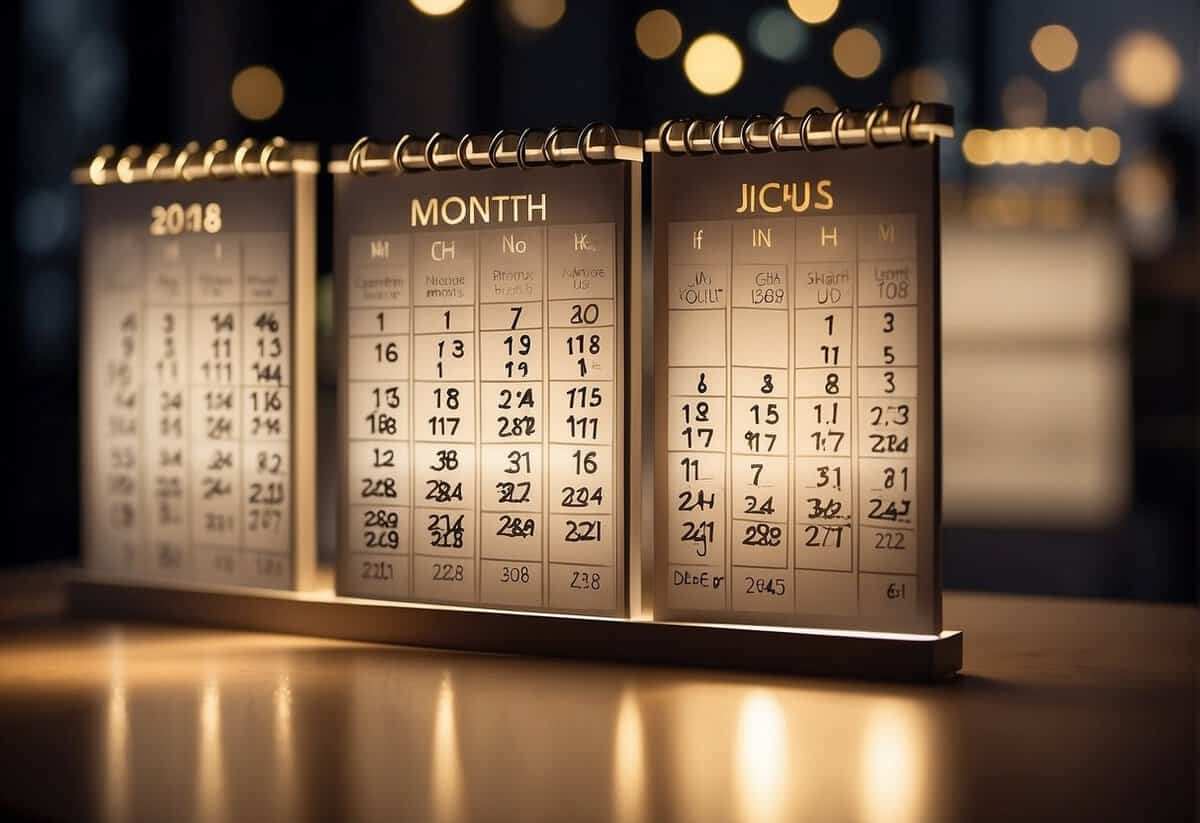
When selecting your wedding month, focusing on personal preferences, guest convenience, and the allure of non-traditional choices can set the stage for a truly memorable day. Let’s pinpoint the best time for you to say “I do”.
Assessing Personal Preferences
Your dream wedding reflects your personal style, so consider the wedding themes, color palette, and floral arrangements that resonate with you. Dreaming of an outdoor ceremony with a natural backdrop? The warmer months may be best. Are cozy elements like fireplaces or a hot cocoa bar on your wishlist? Cooler months could provide the perfect ambiance.
Considering Guest Convenience
Plan with your guests’ comfort in mind. Travel arrangements can be trickier during peak wedding season or holiday times. Selecting a wedding month with milder weather and off-peak travel demands respects your guests’ time and budgets, enhancing attendance and enjoyment.
Contemplating Unconventional Selections
Embrace the unconventional. Couples often overlook cooler months like January or February which can offer unique charms such as comfort food-centric menus and stunning winter wedding photos. Utilizing this time can also mean benefitting from lower venue costs and greater availability.
Frequently Asked Questions
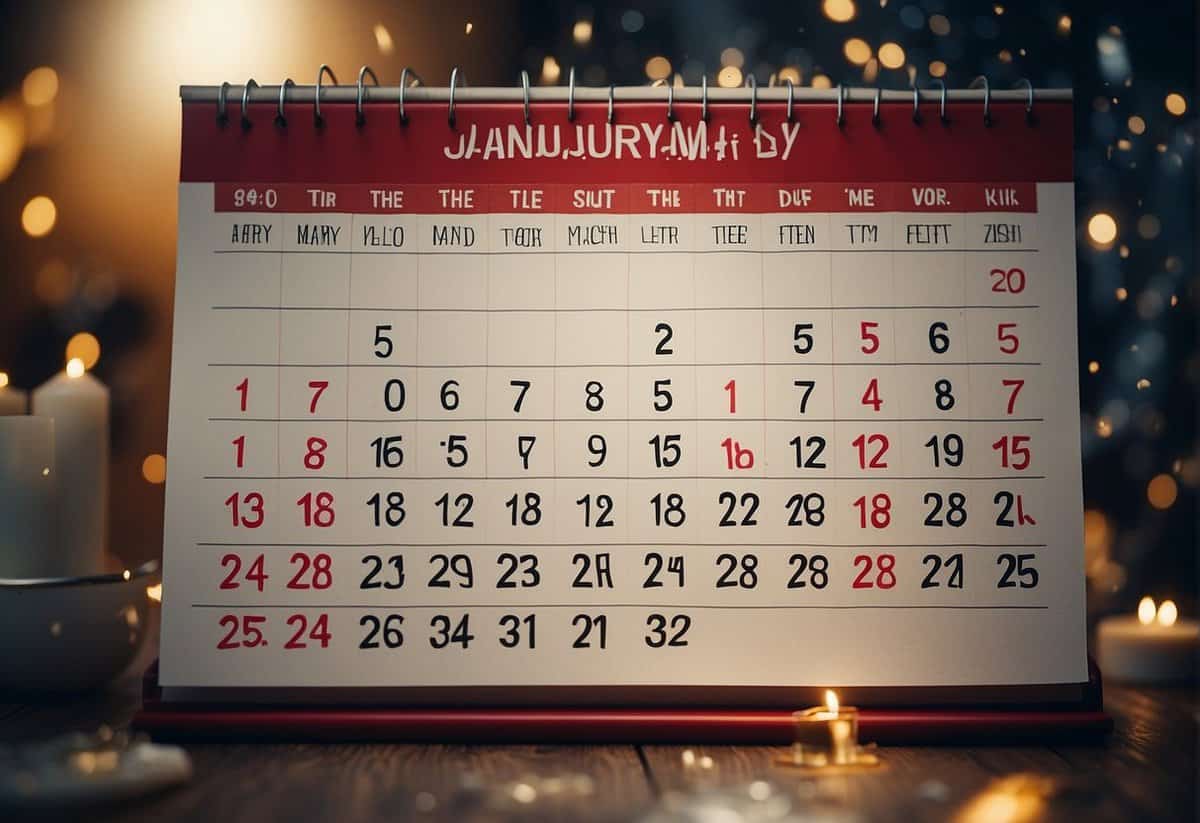
When planning your big day, knowing which months are less popular for weddings can help you save costs and have more options. Let’s explore some of the common queries you might have.
What are the least popular months to get married?
January, February, and March are typically the least popular months to get married. The cold weather in many regions makes these months less appealing for weddings.
During which months are wedding services typically less in demand?
You’ll find that wedding services are less in demand during the winter months and early spring, particularly in January and February, as these tend to be the slower times of the year for weddings.
Which months are considered off-peak for wedding events?
Off-peak months for wedding events are usually considered to be in the late fall and winter, specifically November through March, excluding the December holiday season.
What time of year do wedding venues tend to be most available?
Wedding venues tend to be most available during the winter months, especially in January and February when there’s typically a decline in wedding events.
Are there any months that are particularly unfavorable for weddings?
While it depends on location and personal preferences, July and August can be unfavorable due to the high heat in many regions, and January and February might be avoided due to potential winter weather challenges.
Can you suggest the best months for weddings based on astrological signs?
Astrologically, many believe that June, when the Sun is in Gemini, is a great month for weddings for intellectual connection, or October under Libra for harmonious partnerships. However, this is highly subjective and depends on individual beliefs.

